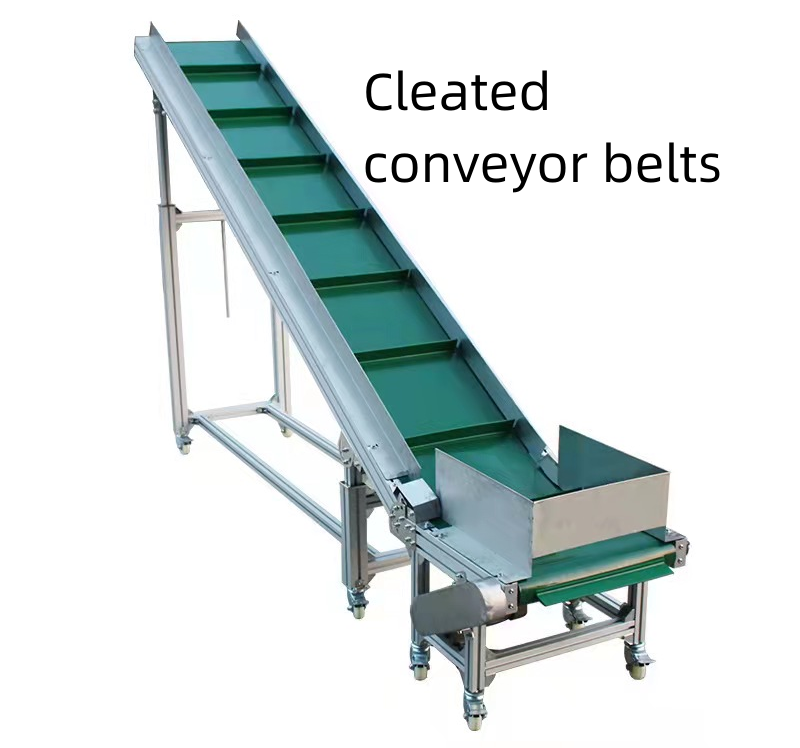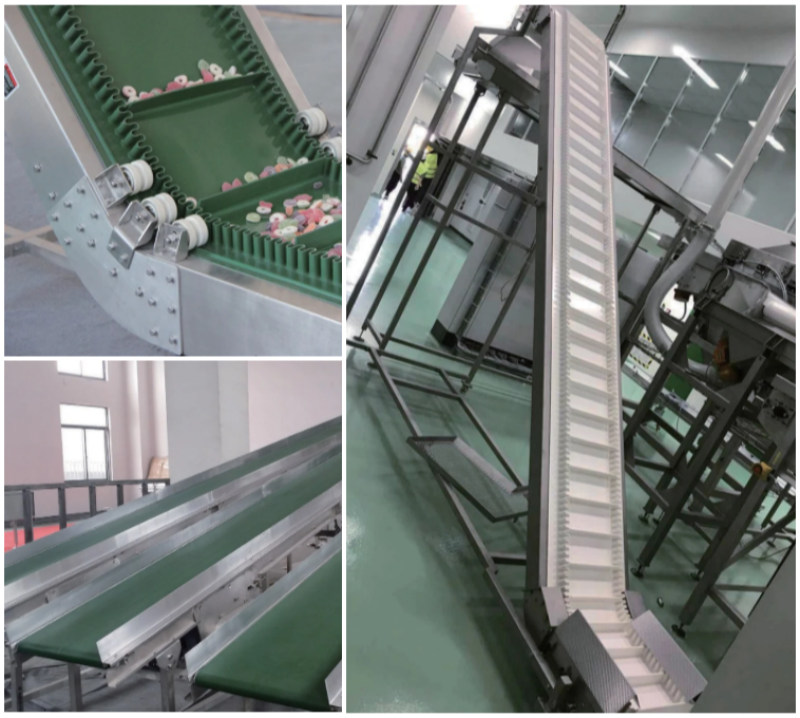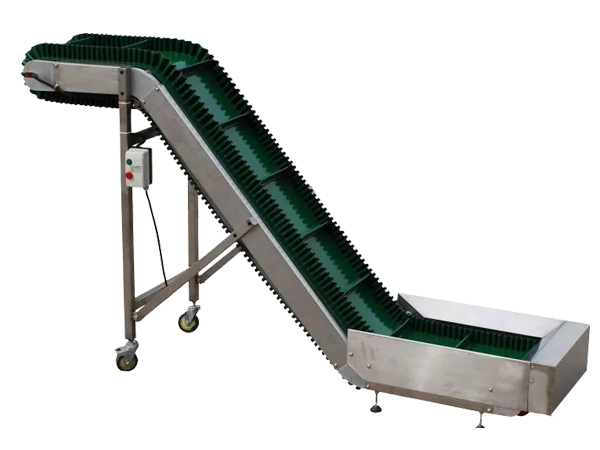What material is used for cleated conveyor belts
Wednesday November-15 2023 16:35:20
Cleated belt conveyors are specially designed conveyor belts used to prevent materials from sliding or overturning in sloped or inclined working environments. It usually consists of multiple layers of materials, the key one being the skid plate. The materials used in cleated conveyor belts and their characteristics will be introduced in detail below.

The anti-skid plates of Cleated belt conveyors are usually made of rubber material. Rubber has good anti-slip properties and wear resistance, which can effectively prevent materials from sliding or overturning during transportation. Common rubber materials include natural rubber and synthetic rubber, such as nitrile rubber, propylene rubber, etc. These rubber materials have a high coefficient of friction and adhesion, providing good anti-slip effects.

In addition to rubber materials, other parts of Cleated belt conveyors also use special materials. For example, the back cover of the conveyor belt is usually made of wear-resistant rubber or polyester fiber material to increase the durability and wear resistance of the conveyor belt. The belt body of the conveyor belt is usually composed of multiple layers of fabric or synthetic fiber materials, which has high strength and tensile resistance to withstand the weight and tensile force of the material.
The material selection of Cleated belt conveyors mainly considers the following factors:

1. Anti-skid performance: The material of the anti-skid plate must have good anti-skid properties and be able to provide sufficient friction to prevent materials from sliding or overturning on slopes or inclined environments.
2. Wear resistance: Since the conveyor belt will be subject to friction and wear by materials during use, the anti-skid material needs to have high wear resistance to extend the service life of the conveyor belt.

3. Strength and tensile resistance: The Cleated belt conveyors needs to bear the weight and tensile force of the material, so the material needs to have sufficient strength and tensile resistance to ensure the stability and safety of the conveyor belt.
4. Chemical resistance: Skid plate materials also need to have a certain degree of chemical resistance and be able to resist the erosion and corrosion of chemical substances to maintain their performance and lifespan.

To sum up, the anti-skid plates of cleaved conveyor belts are mainly made of rubber materials, which have good anti-skid performance and wear resistance. At the same time, other parts of the conveyor belt are also made of wear-resistant and tensile-resistant materials to ensure the stability and durability of the conveyor belt. These specially designed materials enable cleaved conveyor belts to reliably prevent materials from sliding and overturning in inclined working environments, improving work safety and efficiency.


